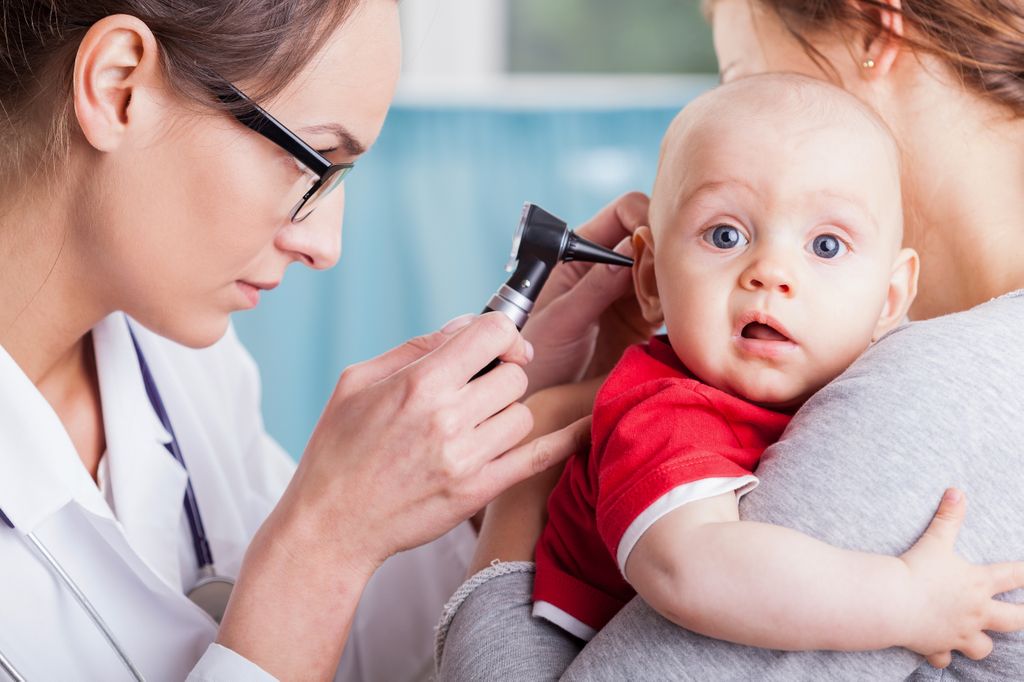Understanding Hearing Loss in Children: Causes, Signs & Next Steps

Hearing plays a critical role in a child’s ability to develop speech, language, communication, and social skills. From the moment they are born, children begin learning about the world through sound—starting with their parents’ voices, lullabies, and household noises. When a child has difficulty hearing, their ability to engage with and learn from their environment is affected.
At SightMD, we understand how important early detection and intervention are for children with hearing challenges. That’s why we offer comprehensive care for pediatric hearing loss—providing families with the tools and support they need to ensure their child thrives.
In this article, we’ll walk you through what hearing loss in children looks like, the different types and causes, early warning signs, diagnostic options, and what you can do to help your child hear—and live—better.
What is Hearing Loss in Children?
Hearing loss in children refers to a reduced ability or inability to hear sounds in one or both ears. It can affect one or both ears and may range from mild to profound in severity. For some children, hearing loss is present at birth. For others, it develops later in life.
Left undiagnosed or untreated, hearing loss can interfere with speech and language development, educational achievement, and even emotional and social well-being. That’s why early detection is key.
Types of Hearing Loss
There are three main types of hearing loss that can affect children:
- Conductive Hearing Loss
This occurs when sound cannot travel efficiently through the outer or middle ear. Common causes include ear infections, fluid in the middle ear, or structural problems like a perforated eardrum or impacted earwax. Conductive hearing loss is often temporary and treatable. - Sensorineural Hearing Loss
This type results from damage to the inner ear (cochlea) or auditory nerve. It is usually permanent and may be present at birth or acquired later due to illness, injury, or exposure to loud noise. Sensorineural hearing loss often requires the use of hearing aids or cochlear implants. - Mixed Hearing Loss
A combination of both conductive and sensorineural hearing loss, mixed hearing loss affects multiple parts of the hearing pathway. Treatment typically requires a combination of medical, surgical, and hearing device interventions.
Common Causes of Hearing Loss in Children
Hearing loss in children can be either congenital (present at birth) or acquired (develops after birth). Understanding the potential causes can help parents take preventive steps and seek timely intervention.
Here are some of the most common causes:
- Genetic factors – Inherited hearing loss can occur even if no family history exists.
- Infections during pregnancy – Rubella, cytomegalovirus (CMV), toxoplasmosis, and other infections can affect a baby’s hearing development in the womb.
- Premature birth or low birth weight – Babies born prematurely or with complications are at a higher risk of hearing loss.
- Chronic ear infections – Repeated ear infections can cause fluid buildup or damage to the middle ear structures, leading to hearing issues.
- Exposure to loud noise – Prolonged or sudden exposure to loud environments (e.g., concerts, headphones at high volume) can damage hearing over time.
- Head trauma or birth injuries – Damage to the auditory nerve or inner ear can lead to hearing loss.
In some cases, the exact cause of hearing loss may not be identifiable. That’s why routine hearing screenings are essential for every child, regardless of risk factors.
Early Signs of Hearing Loss in Children
Early detection can make a world of difference in how well a child adapts and develops. Parents are often the first to notice that something seems off, especially during key developmental stages.
Here are some of the early signs to watch for:
- Not startling at loud noises in infancy
- Not turning toward sound by 6 months of age
- Delays in speech or unclear speech
- Frequently saying “What?” or asking for repetition
- Not responding when called by name
- Turning up the TV or tablet volume excessively
- Difficulty following verbal instructions
Children with hearing loss may also appear inattentive or be mistakenly assumed to have behavioral issues when, in reality, they are simply struggling to hear and understand what’s happening around them.
Developmental Hearing Milestones to Monitor
Monitoring your child’s response to sound as they grow can help you identify potential concerns early. Here are some important milestones to look for during the first two years of life:
- Birth to 3 months: Startles at loud noises, calms when spoken to
- 4 to 6 months: Looks toward new sounds, responds to changes in tone of voice
- 7 to 12 months: Responds to their name, understands simple words like “no” and “bye-bye”
- 1 to 2 years: Says simple words like “mama,” follows basic directions, enjoys music and rhymes
If your child is missing any of these milestones, it’s a good idea to have their hearing evaluated by a professional.
Diagnosis and Treatment Options
At SightMD, our team understands how vital hearing is to your child’s overall well-being. We offer comprehensive pediatric hearing services designed to diagnose and treat hearing loss in children of all ages.
Here’s what you can expect when you visit:
- Pediatric Hearing Screenings: Non-invasive tests to evaluate your child’s hearing ability
- Diagnostic Audiology Exams: Detailed assessments to determine the type and severity of hearing loss
- Hearing Aids and Assistive Devices: Customized to meet your child’s unique needs
- Cochlear Implant Evaluations: For children with severe to profound hearing loss who may benefit from surgical intervention
- Ongoing Hearing Care and Counseling: To support families through treatment, adjustment, and educational planning
Every child’s hearing journey is different. That’s why we work closely with families to create personalized care plans focused on long-term success.
Prevention and Care Tips
While not all causes of childhood hearing loss are preventable, there are several things parents can do to help protect their children’s hearing health:
- Keep headphone and device volumes at safe levels
- Use child-safe headphones with volume limiters
- Ensure your child receives recommended vaccinations, including those for rubella, meningitis, and flu
- Treat ear infections promptly and thoroughly
- Avoid prolonged exposure to loud environments (concerts, fireworks, noisy toys)
- Schedule regular pediatric checkups and request hearing evaluations if concerns arise
By taking a proactive approach, you can reduce the risk of preventable hearing loss and ensure early detection if issues develop.
FAQs about Children’s Hearing Loss
Chronic ear infections (otitis media) and congenital factors (such as inherited conditions or infections during pregnancy) are among the most frequent causes of childhood hearing loss.
Signs include delayed speech, not reacting to sounds, frequently turning up the volume, and appearing inattentive. If you notice any of these signs, it’s best to schedule a hearing evaluation.
Yes. Many forms of hearing loss are treatable through hearing aids, medical or surgical interventions, and auditory therapy. Early diagnosis and treatment lead to the best outcomes.
Some types are preventable, especially those caused by noise exposure, infections, and untreated ear conditions. Practicing good ear health habits and scheduling routine screenings can help.Some types are preventable, especially those caused by noise exposure, infections, and untreated ear conditions. Practicing good ear health habits and scheduling routine screenings can help.
Take the Next Step with SightMD
If you suspect your child may be struggling with hearing loss, don’t wait. Early detection and treatment can significantly improve your child’s speech, learning, and social development. The caring specialists at SightMD are here to help you navigate the process—from testing to treatment and beyond.
Concerned about your child’s hearing development?
Schedule a pediatric hearing screening with SightMD today and ensure their world is full of sound.


